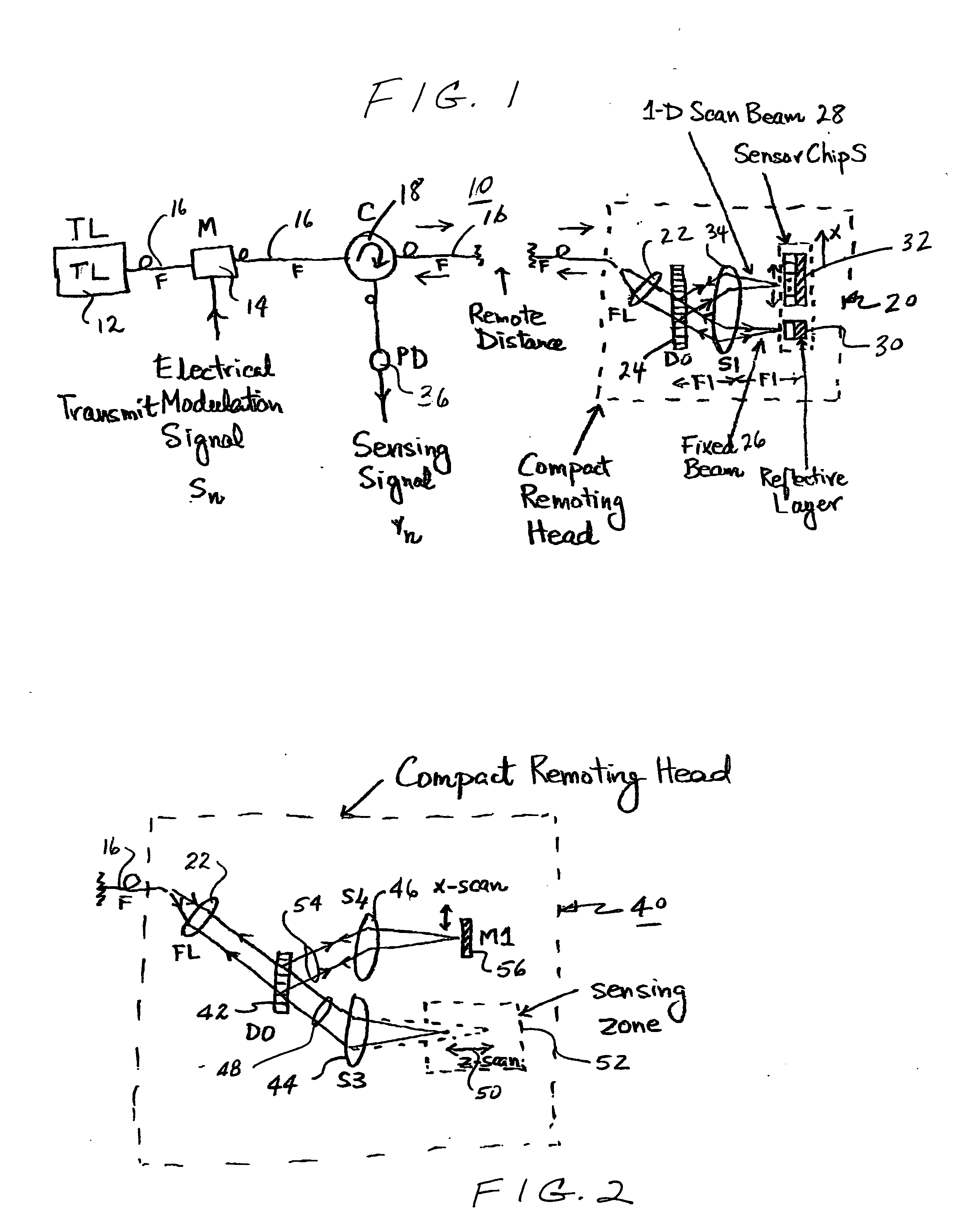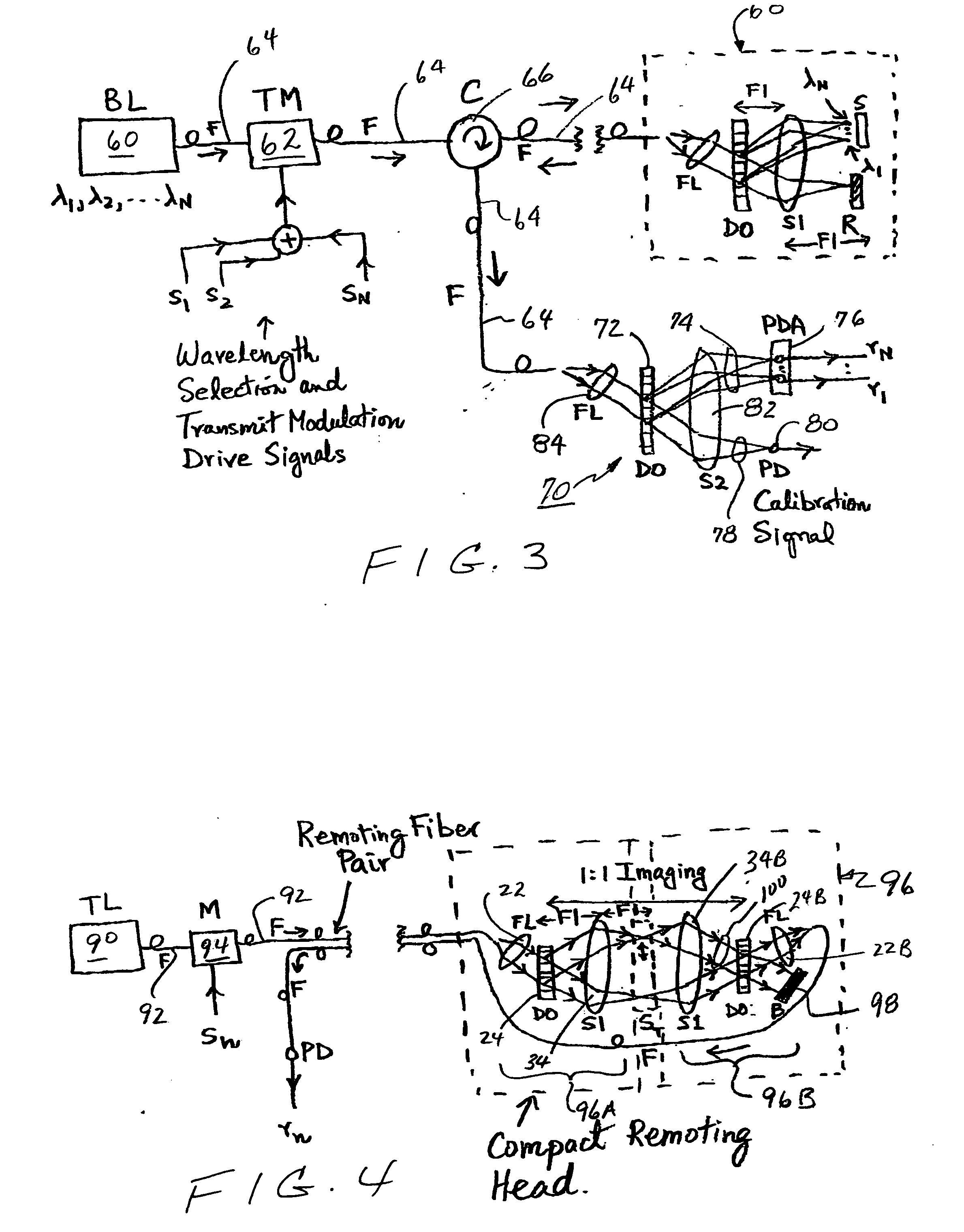Agile high sensitivity optical sensor
a high-sensitivity, optical sensor technology, applied in the direction of converting sensor output optically, instruments, measurement devices, etc., can solve the problems of high drive power requirements, limiting the use of scanning interferometer optical sensing in hostile remote settings, and large size, so as to achieve low noise sensing and improve signal processing
- Summary
- Abstract
- Description
- Claims
- Application Information
AI Technical Summary
Problems solved by technology
Method used
Image
Examples
Embodiment Construction
[0011] It is well known that changes of wavelength coupled with a wavelength dispersive optic can lead to one-dimensional (“1-D”) beam scans in freespace. This idea dates back to the 1970s, and has been explored to make optical scanners, optical radar, optical microscopy, optical printing, and optical memory system for holographic data recording. More recently, this wavelength tuning along with wavelength selection has been proposed for wide coverage optical laser scanners and optical data reading devices. In addition, wavelength tuning combined with traditional fiber-optics such as 2×2 couplers have been used to form interferometers. All these works are described in the following references: R. L. Forward, U.S. Pat. No. 3,612,659, Oct. 12, 1971; R. S. Hughes, et.al., U.S. Pat. No. 4,184,767, Jan. 22, 1980; K. G. Leib, U.S. Pat. No. 4,250,465, Feb. 10, 1981; K. G. Leib, U.S. Pat. No. 4,735,486, Apr. 5, 1988; T. Inagaki, U.S. Pat. No. 4,938,550, Jul. 3, 1990; B. Picard, U.S. Pat. No....
PUM
 Login to View More
Login to View More Abstract
Description
Claims
Application Information
 Login to View More
Login to View More - R&D
- Intellectual Property
- Life Sciences
- Materials
- Tech Scout
- Unparalleled Data Quality
- Higher Quality Content
- 60% Fewer Hallucinations
Browse by: Latest US Patents, China's latest patents, Technical Efficacy Thesaurus, Application Domain, Technology Topic, Popular Technical Reports.
© 2025 PatSnap. All rights reserved.Legal|Privacy policy|Modern Slavery Act Transparency Statement|Sitemap|About US| Contact US: help@patsnap.com



